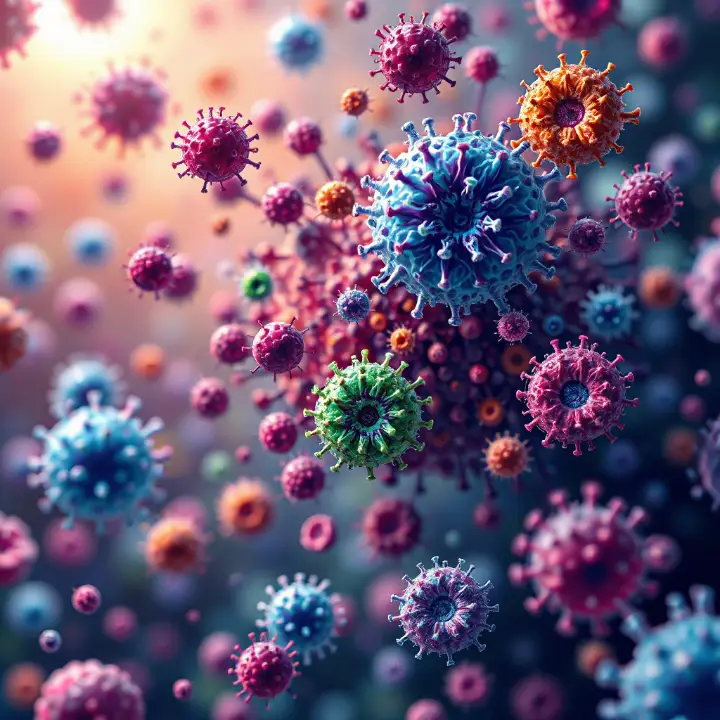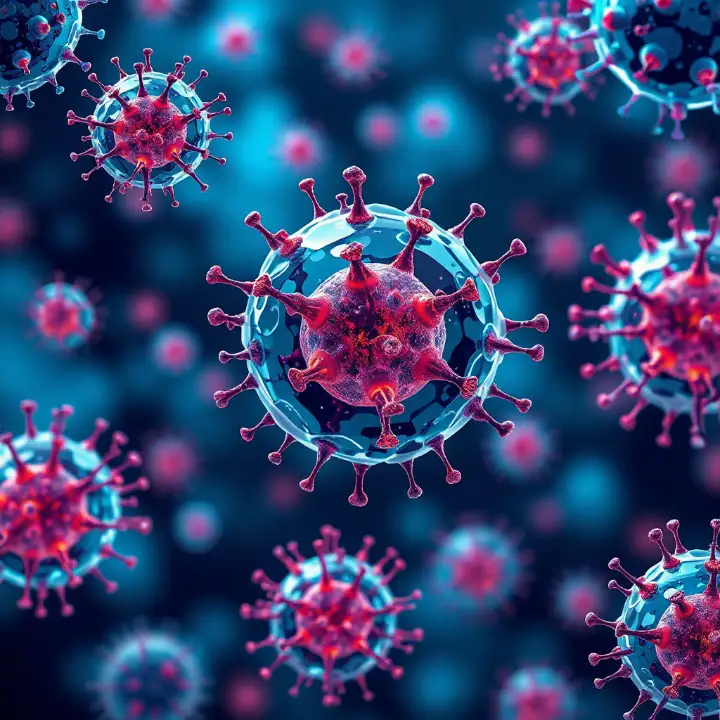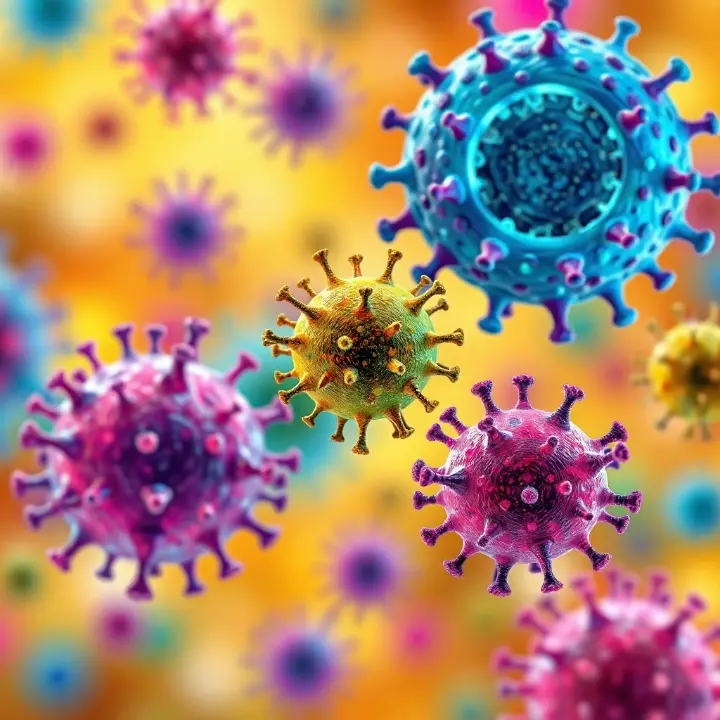Leydig Cell Tumor Explained and Its Causes

A Leydig cell tumour is a rare growth that develops from Leydig cells, which are responsible for producing testosterone. These tumors can form in the testes or ovaries and sometimes exhibit hormonal activity. They account for about 4% of adult testicular tumors and 3% of testicular tumors in children. Depending on the hormones they release, these tumors may cause feminizing or virilizing effects. For example, boys with androgen-secreting tumors might experience early puberty, while estrogen-secreting tumors could lead to symptoms like gynecomastia or infertility. Understanding the causes of this condition is crucial for early detection and treatment.
Key Takeaways
Leydig cell tumors are rare and can grow in males or females. They usually form in the testes or ovaries.
Symptoms differ by gender. Males may have lumps, breast growth, or trouble having kids. Females may have male-like traits or irregular periods.
Finding these tumors early with exams and scans is very important. Treatment often includes surgery.
Changes in genes and hormone problems can cause these tumors. However, many cases have no clear cause.
Most Leydig cell tumors are not cancerous. Finding them early helps recovery. See a doctor if you notice symptoms.
What Is a Leydig Cell Tumor?

Characteristics of Leydig Cell Tumors
Location and function of Leydig cells
Leydig cells are specialized cells found in the testes and, less commonly, in the ovaries. These cells play a vital role in producing testosterone, a hormone essential for male sexual development and reproductive health. In females, Leydig cells contribute to the ovarian stroma, where they may have a minor role in hormone production.
Leydig cell tumors arise from these cells and are the most common type of sex cord-stromal tumors in adults. While they primarily affect males, they can also occur in females, where they are often malignant. Histologically, these tumors consist of medium to large polygonal cells with abundant eosinophilic cytoplasm, resembling normal Leydig cells.
Development of tumors in the testes or ovaries
In males, Leydig cell tumors typically develop within the testes, presenting as a small, well-defined mass. In females, these tumors form in the ovarian stroma. Although rare, these tumors can produce hormones, leading to noticeable physical changes.
Symptoms of Leydig Cell Tumors
Symptoms in males
If you are male, you might notice a painless, nontender lump in the testicle. Other symptoms include gynecomastia (enlarged breast tissue), loss of libido, or infertility. In boys, androgen-secreting tumors may cause early puberty, while estrogen-secreting tumors could lead to feminizing effects like gynecomastia or feminine hair distribution.
Symptoms in females
In females, Leydig cell tumors often cause virilization, which includes symptoms like deepening of the voice, increased body hair, or clitoral enlargement. Hormonal imbalances may also lead to irregular menstrual cycles or infertility.
Diagnosis of Leydig Cell Tumors
Physical examination and medical history
Your doctor will begin by reviewing your medical history and performing a physical exam. They will check for any lumps, swelling, or other abnormalities in the testes or ovaries.
Imaging tests and biopsy procedures
To confirm the diagnosis, imaging techniques are essential. Common methods include:
Imaging Technique | Description |
|---|---|
Scrotal Ultrasonography | Identifies a round, hyperechoic mass with clear boundaries. |
MRI | Detects small tumors not visible on ultrasound; highlights tumors with contrast enhancement. |
CT Scanning | Evaluates the abdomen and chest if malignancy is suspected. |
Contrast-Enhanced Ultrasound | Shows hypervascularization, indicating tumors with rapid centripetal filling. |
A biopsy may also be performed to examine the tumor cells under a microscope. This step helps confirm the diagnosis and determine whether the tumor is benign or malignant.
Causes of Leydig Cell Tumors
Genetic and Hormonal Factors
Potential genetic mutations
Genetic mutations play a significant role in the development of Leydig cell tumors. Some mutations directly affect the function of Leydig cells, leading to abnormal growth. For example, activating mutations in the luteinizing hormone receptor can trigger tumor formation. Additionally, mutations in the DICER1 gene, commonly associated with Sertoli-Leydig cell tumors, have also been observed. Below is a table summarizing these mutations:
Genetic Mutation | Description |
|---|---|
Luteinizing Hormone Receptor | Activating mutation associated with Leydig cell tumors |
DICER1 | Noted mutations in related tumors, primarily in Sertoli-Leydig cell tumors |
Hormonal imbalances (e.g., testosterone, estrogen)
Hormonal imbalances significantly contribute to Leydig cell tumor development. Several factors can disrupt the hormonal environment:
Excessive stimulation of Leydig cells by luteinizing hormone due to hypothalamic-pituitary axis disorders.
Long-term estrogen exposure, as seen in animal studies, which has been linked to tumor formation.
Complex hormonal interactions, where Leydig cell tumors may secrete not only testosterone but also estrogen, progesterone, and corticosteroids.
These imbalances create an environment that promotes abnormal cell growth, increasing the risk of tumor development.
Environmental and Unknown Factors
Possible environmental exposures
Environmental factors may also influence the development of Leydig cell tumors. Although no specific exposures have been definitively linked, researchers suggest that prolonged exposure to endocrine-disrupting chemicals (EDCs) could play a role. These chemicals, found in pesticides, plastics, and industrial pollutants, can interfere with hormonal balance, potentially triggering tumor growth.
Lack of established risk factors
Despite ongoing research, the exact causes of Leydig cell tumors remain unclear. Many cases occur without any identifiable risk factors, making it challenging to predict who might develop this condition. This lack of clarity highlights the need for further studies to uncover additional genetic, hormonal, or environmental triggers.
Risk Factors for Leydig Cell Tumors
Age and Gender
Common age groups affected
Leydig cell tumors can occur in both children and adults, but certain age groups are more commonly affected. In children, these tumors typically appear between the ages of 3 and 9. For adults, the incidence peaks between the ages of 30 and 60. The table below highlights these age ranges:
Age Range | Incidence Peak |
|---|---|
Children | |
30 to 60 years | Adults |
If you or someone you know falls within these age groups and experiences symptoms, it is essential to consult a healthcare provider promptly.
Differences in prevalence between males and females
Leydig cell tumors are more common in males than females. In males, these tumors usually develop in the testes, while in females, they form in the ovarian stroma. Although rare in females, these tumors are often malignant when they do occur. Understanding these gender differences can help you recognize the importance of early detection and treatment.
Family and Medical History
Genetic predisposition
A family history of certain genetic mutations may increase your risk of developing a Leydig cell tumour. Mutations in genes like DICER1 have been linked to related tumor types, suggesting a possible genetic predisposition. If you have a family history of similar conditions, discussing this with your doctor can help assess your risk.
Connection to other medical conditions
Leydig cell tumors are often associated with specific medical conditions. For example, androgen-secreting tumors in boys can lead to precocious puberty, while estrogen-secreting tumors may cause feminizing symptoms like gynecomastia or loss of libido in adults. The table below outlines some of these conditions:
Medical Condition | Description |
|---|---|
Precocious puberty | Occurs in prepubertal boys with androgen-secreting tumors. |
Feminizing symptoms | Seen in boys with estrogen-secreting tumors. |
Loss of libido | Affects adults with estrogen-secreting tumors. |
Erectile dysfunction | Affects adults with estrogen-secreting tumors. |
Infertility | Affects adults with estrogen-secreting tumors. |
Gynecomastia | Affects adults with estrogen-secreting tumors. |
Feminine hair distribution | Affects adults with estrogen-secreting tumors. |
Gonadogenital atrophy | Affects adults with estrogen-secreting tumors. |
Note: If you notice any of these symptoms, seeking medical advice can lead to early diagnosis and better outcomes.
Treatment and Prognosis of Leydig Cell Tumors

Treatment Options
Surgery as the primary treatment
Surgery remains the most effective treatment for Leydig cell tumors. In most cases, doctors recommend removing the tumor through testis-sparing surgery or orchiectomy (removal of the affected testicle). The success rates for surgical treatments are high, as shown in studies:
Study Description | Success Rate | Follow-up Duration | Recurrences |
|---|---|---|---|
Testis-sparing surgery in 25 patients (including 4 with Leydig tumors) | Mean 42.7 months | 3 local recurrences | |
Conservative surgery in 20 patients | 100% disease-free survival | Mean 15 years | No local recurrences or metastases |
These results highlight the importance of early surgical intervention for achieving excellent outcomes.
Role of radiation and chemotherapy
Radiation and chemotherapy are rarely used for Leydig cell tumors. These tumors show limited sensitivity to both treatments. Chemotherapy has minimal effectiveness in managing malignant cases, and radiation therapy has no established role. Doctors typically reserve these options for rare, advanced cases where surgery is not feasible.
Prognosis and Outcomes
Survival rates and recovery
The prognosis for Leydig cell tumors depends on whether the tumor is benign or malignant. Benign tumors have an excellent prognosis, with most patients achieving full recovery after surgery. Malignant tumors, however, have a mean survival rate of 2-3 years. The table below summarizes survival rates:
Tumor Type | Survival Rate |
|---|---|
Benign | Excellent prognosis |
Malignant | Mean survival of 2-3 years |
OMD-free survival | 98.1% (fewer than 2 risk factors) |
OMD-free survival | 44.9% (two or more risk factors) |
Patients with fewer risk factors, such as smaller tumor size and no lymphovascular invasion, have significantly better outcomes.
Factors influencing prognosis
Several factors affect the prognosis of Leydig cell tumors. Advanced age often correlates with poorer outcomes. Tumor characteristics, such as size greater than 5 cm, cellular atypia, and necrosis, also play a critical role. Each additional risk factor increases the likelihood of occult metastatic disease. For example, patients with fewer than two risk factors have a five-year OMD-free survival rate of 98.1%, compared to 44.9% for those with two or more risk factors.
Tip: Early detection and surgical treatment greatly improve your chances of recovery. If you notice any symptoms, consult a healthcare provider promptly.
Understanding Leydig cell tumors is essential for recognizing their impact on health. These rare tumors arise from Leydig cells, which produce testosterone, and their exact causes remain unknown. They are not linked to undescended testes or other known risk factors. However, excessive stimulation of Leydig cells may play a role in their development.
Early diagnosis is critical for effective treatment. Detecting these tumors early allows for testicle-sparing surgery, which is both safe and feasible. Early detection also improves treatment outcomes, making the condition highly treatable. If you notice symptoms like hormonal changes or unusual lumps, consult a healthcare provider promptly. Taking action early can significantly improve your prognosis.
FAQ
What causes Leydig cell tumors?
Leydig cell tumors develop due to genetic mutations or hormonal imbalances. Environmental factors, like exposure to endocrine-disrupting chemicals, may also contribute. However, many cases occur without clear causes, making it difficult to predict who might develop this condition.
Are Leydig cell tumors always cancerous?
No, most Leydig cell tumors are benign. Malignant cases are rare but can spread to other parts of the body. Early diagnosis helps determine the tumor type and ensures effective treatment.
Can Leydig cell tumors affect fertility?
Yes, these tumors can impact fertility. Hormonal imbalances caused by the tumor may lead to infertility in both males and females. Early treatment can help preserve reproductive health.
How are Leydig cell tumors treated?
Surgery is the primary treatment for Leydig cell tumors. Doctors often recommend removing the tumor or the affected testicle. Radiation and chemotherapy are rarely used, as these tumors show limited sensitivity to such treatments.
Should you consult a doctor if you notice symptoms?
Yes, you should consult a healthcare provider immediately if you notice symptoms like testicular lumps, hormonal changes, or unusual physical changes. Early diagnosis improves treatment outcomes and recovery chances.
Tip: Regular check-ups and awareness of symptoms can help detect Leydig cell tumors early. Always prioritize your health by seeking medical advice when needed.
---
ℹ️ Explore more: Read our Comprehensive Guide to All Known Cancer Types for symptoms, causes, and treatments.
See Also
Exploring Glucagonoma: Key Insights And Contributing Factors
Simplifying The Causes Behind Gastrointestinal Stromal Tumors
Essential Information About Carcinoid Tumors You Need
